
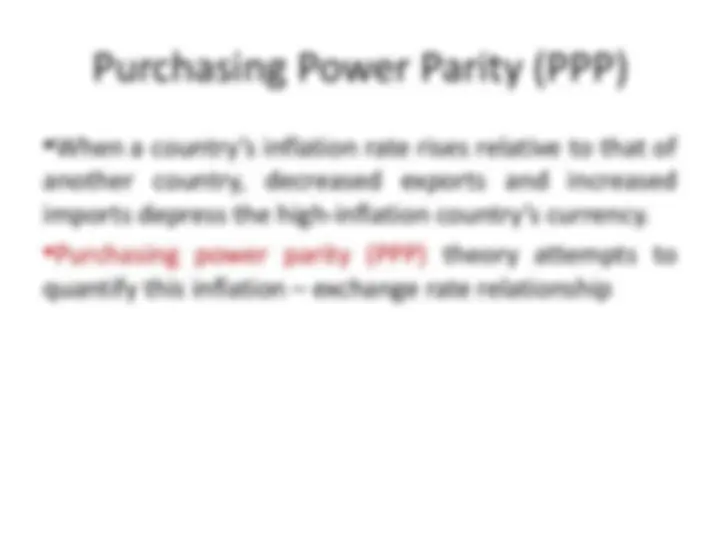
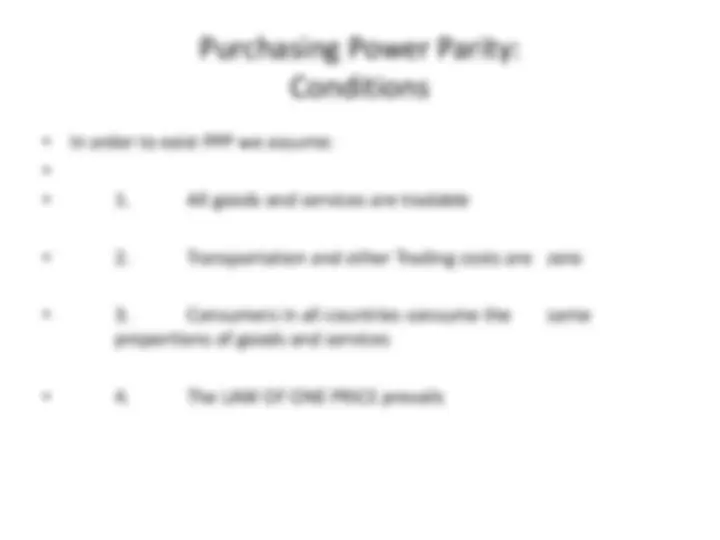
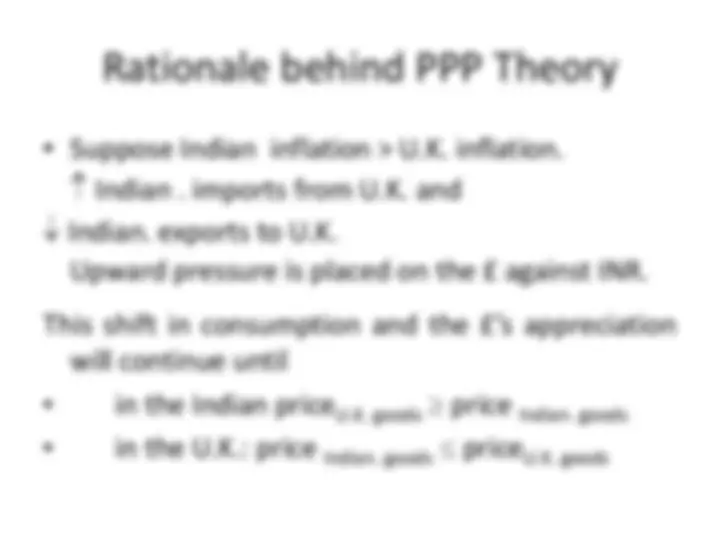
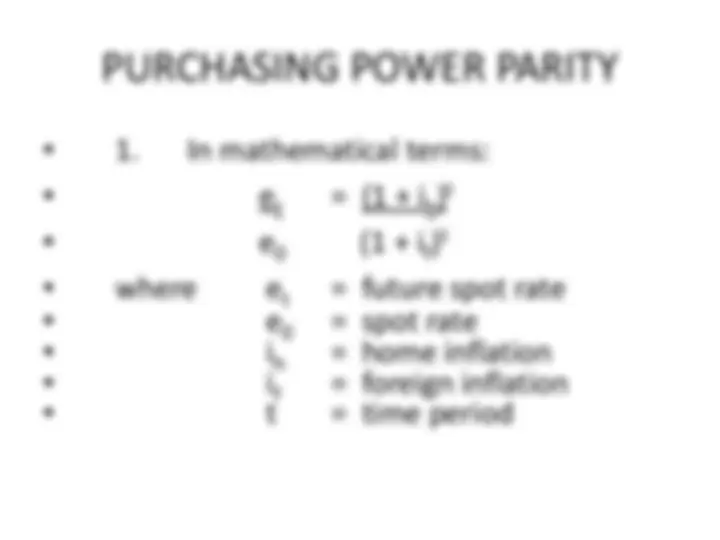
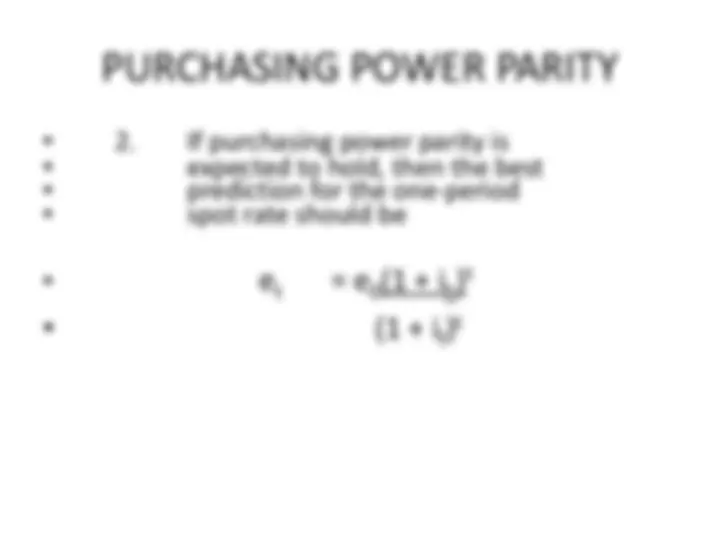
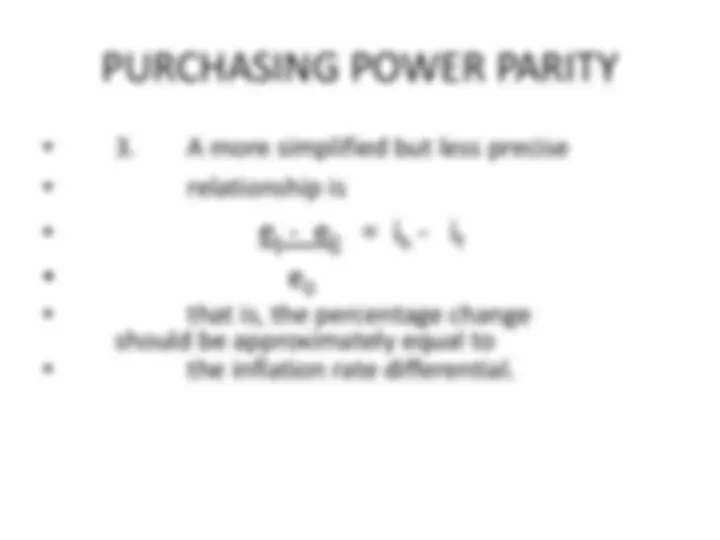
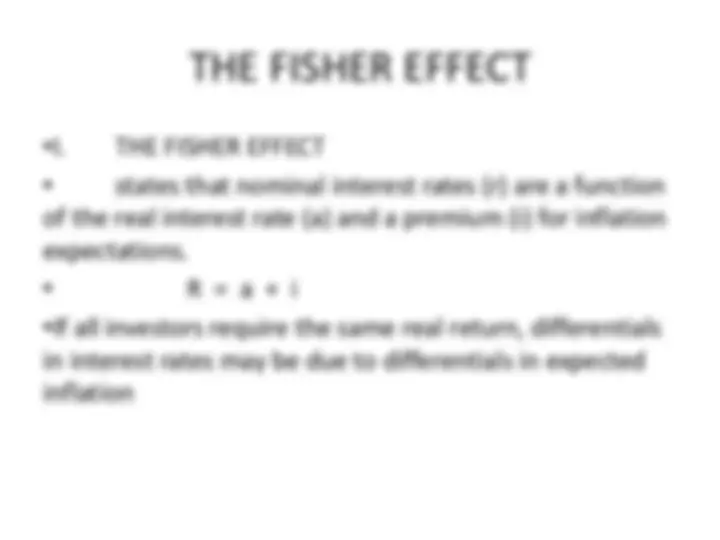
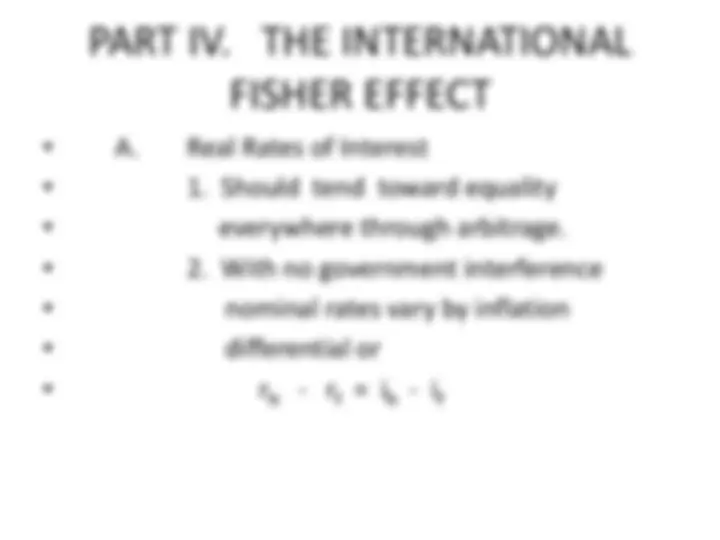
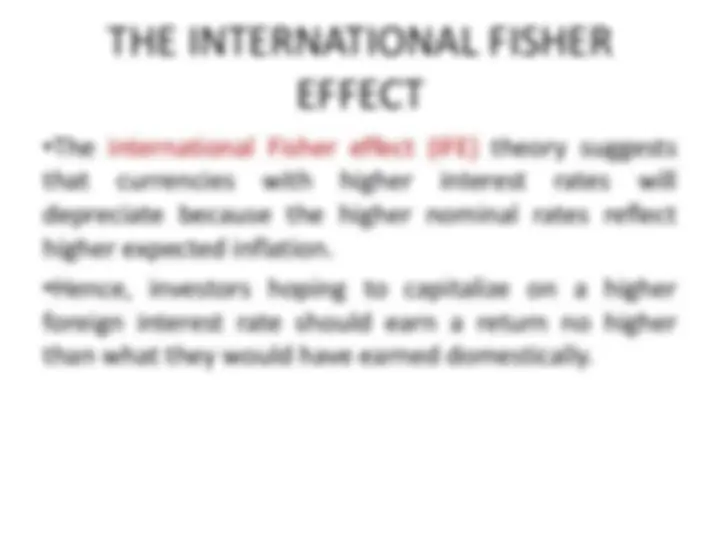
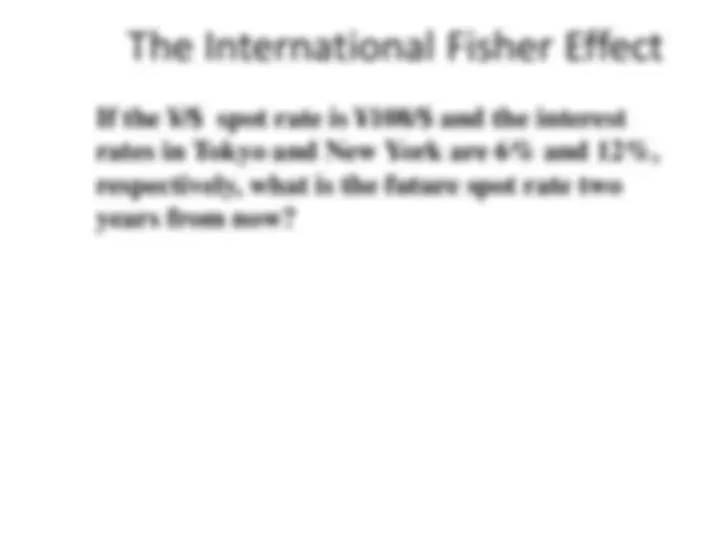


Study with the several resources on Docsity

Earn points by helping other students or get them with a premium plan


Prepare for your exams
Study with the several resources on Docsity

Earn points to download
Earn points by helping other students or get them with a premium plan
Community
Ask the community for help and clear up your study doubts
Discover the best universities in your country according to Docsity users
Free resources
Download our free guides on studying techniques, anxiety management strategies, and thesis advice from Docsity tutors
This lecture is from Finance and Accounting. Key important points are: Parity Conditions in International Finance, Currency Forecasting, Purchasing Power Parity, Theory of Purchasing, Arbitrage and Law of One Price, Relative Purchasing Power Parity, Confounding Effects
Typology: Slides
1 / 18

This page cannot be seen from the preview
Don't miss anything!











PURCHASING POWER PARITY
Rationale behind PPP Theory
PURCHASING POWER PARITY
PURCHASING POWER PARITY
PURCHASING POWER PARITY
Why PPP Does Not Occur
THE FISHER EFFECT
PART IV. THE INTERNATIONAL
FISHER EFFECT
THE INTERNATIONAL FISHER
EFFECT
THE INTERNATIONAL FISHER
EFFECT